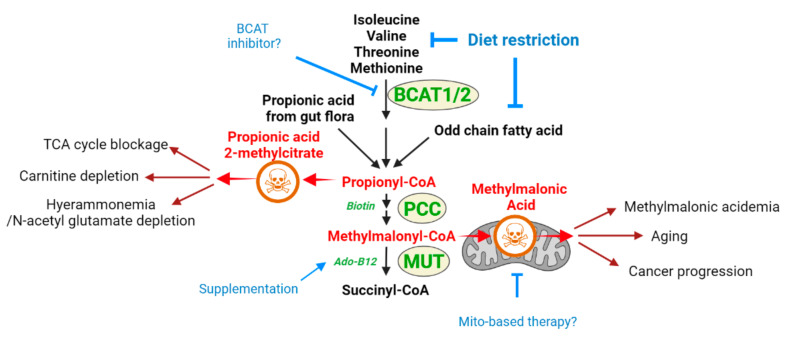Figure 2.
Schematic diagram of metabolic pathway containing toxic methylmalonyl-CoA and its toxicity mechanism and treatment options. In methylmalonic aciduria, branched-chain amino acids, fatty acids, or propionic acids produced by gut flora can feed into propionyl-CoA formation, leading to methylmalonyl-CoA production. The loss of MUT activity via mutations to the enzyme itself or via mutations to enzymes required to produce the adenosylcobalamin cofactor leads to an accumulation of methylmalonic acid. Methylmalonic acid appears to cause mitochondrial toxicity, and this mechanism may be at play in other disease contexts as well. Dietary restriction of branched-chain amino acids to restrict MMA production from above, or adenosylcobalamin supplementation to aid MUT activity, are current strategies. This diagram of MMA pathology suggests that a BCAT enzyme inhibitor, or therapies that aid mitochondrial function, may be considered as well. BCAT1/2: branched-chain amino acid aminotransferase1/2; PCC: propionyl-CoA carboxylase; MUT: methylmalonyl-CoA mutase.

